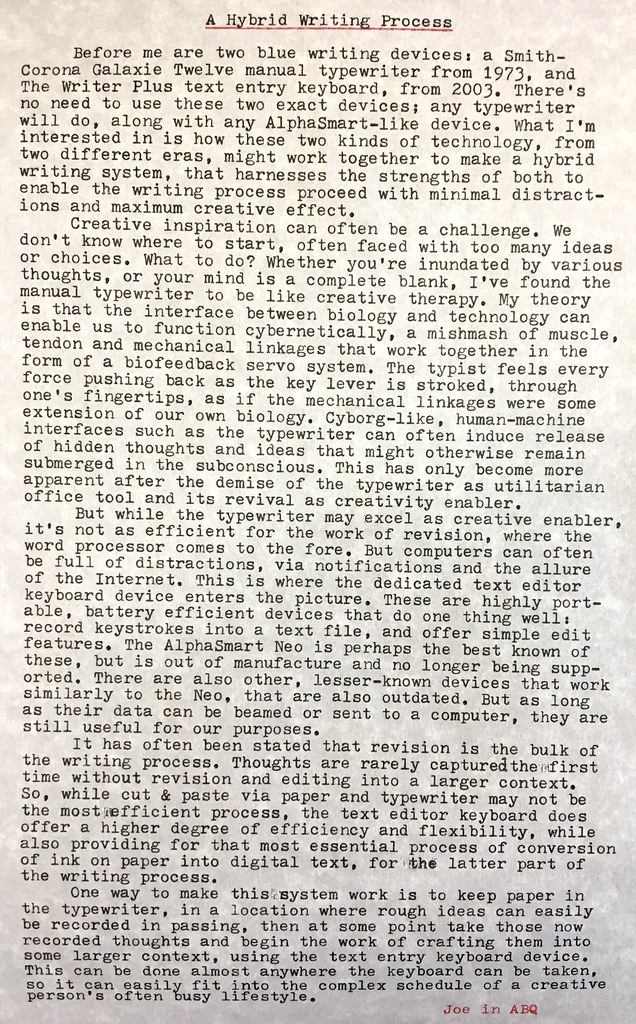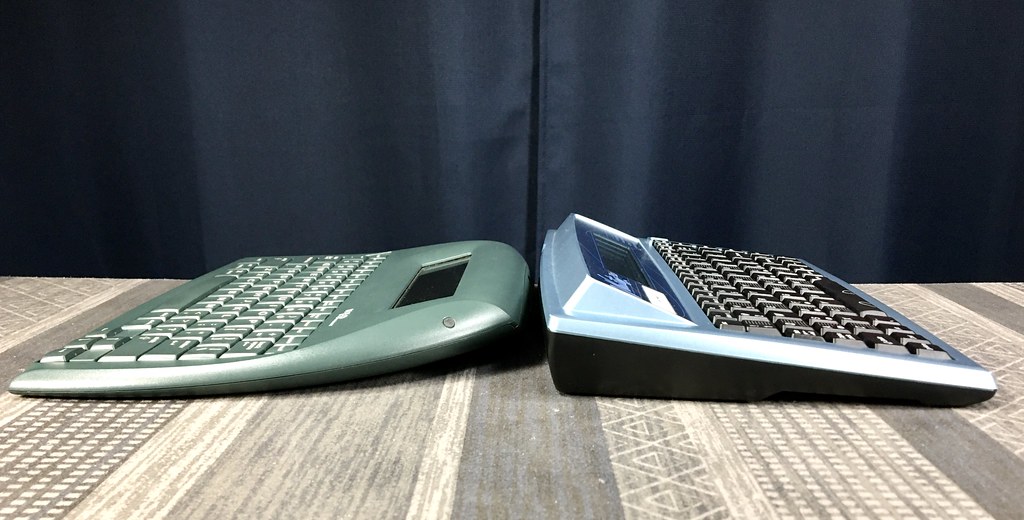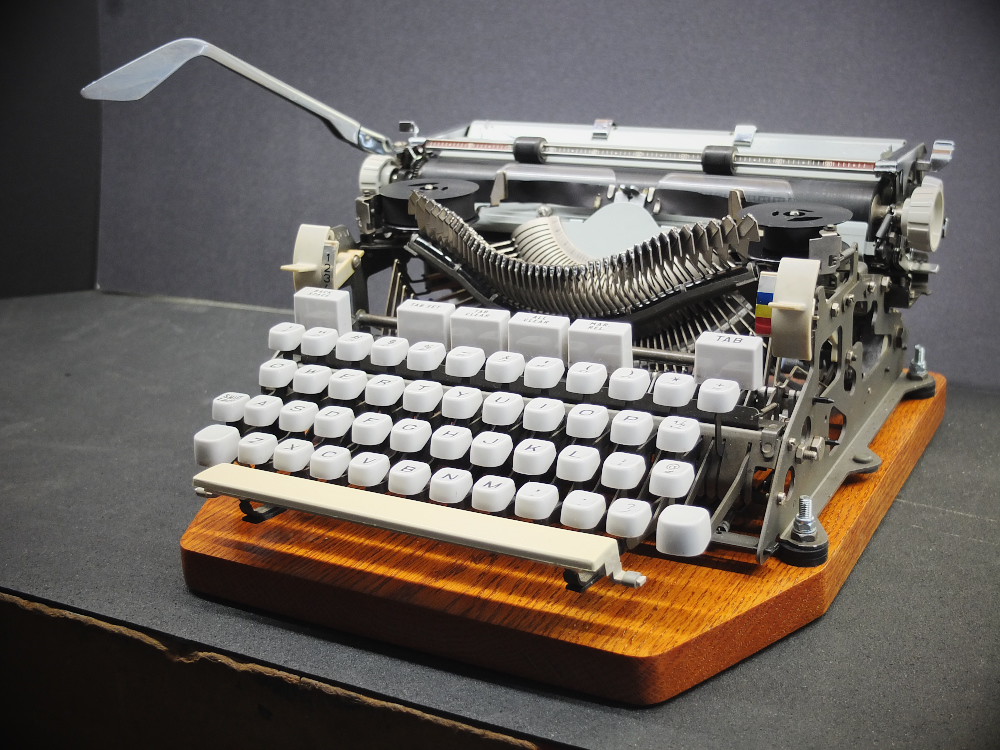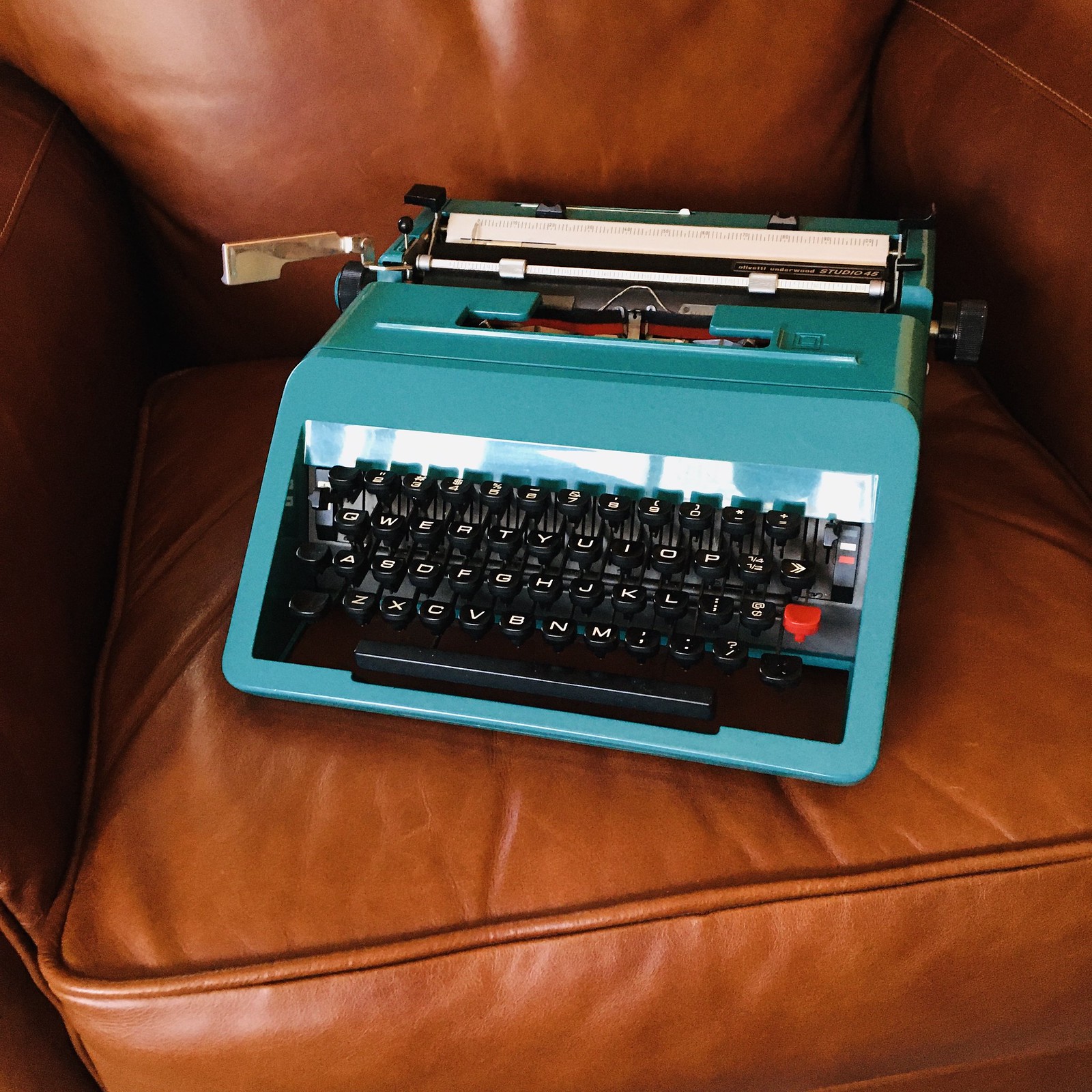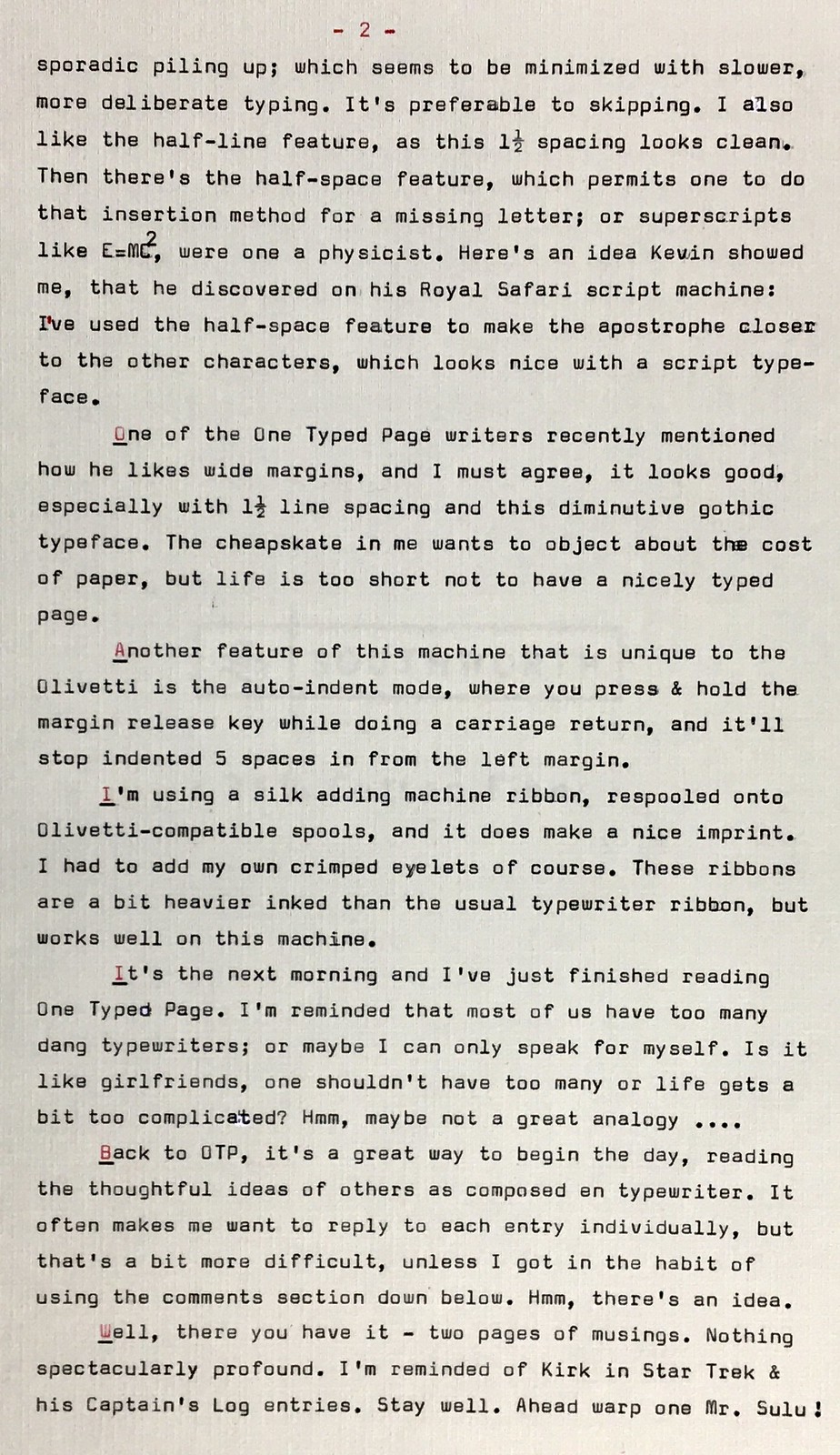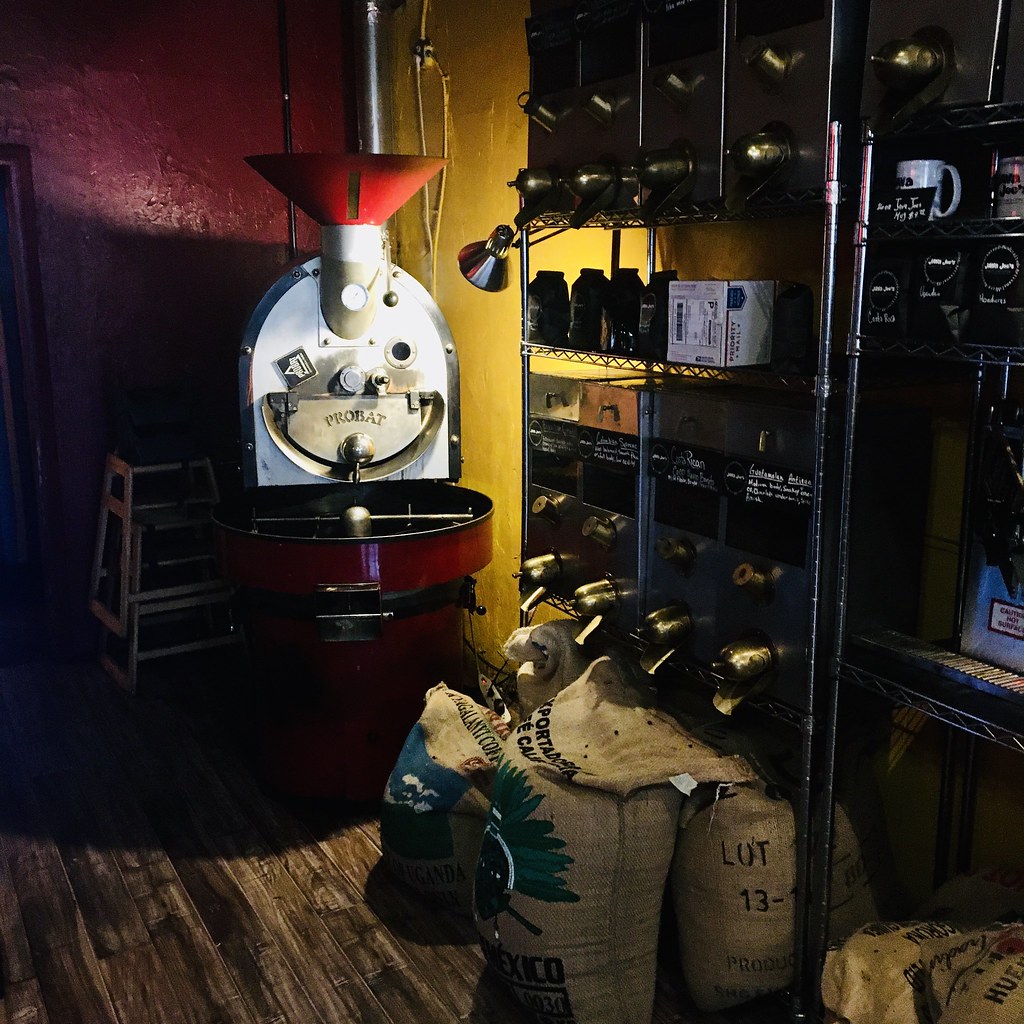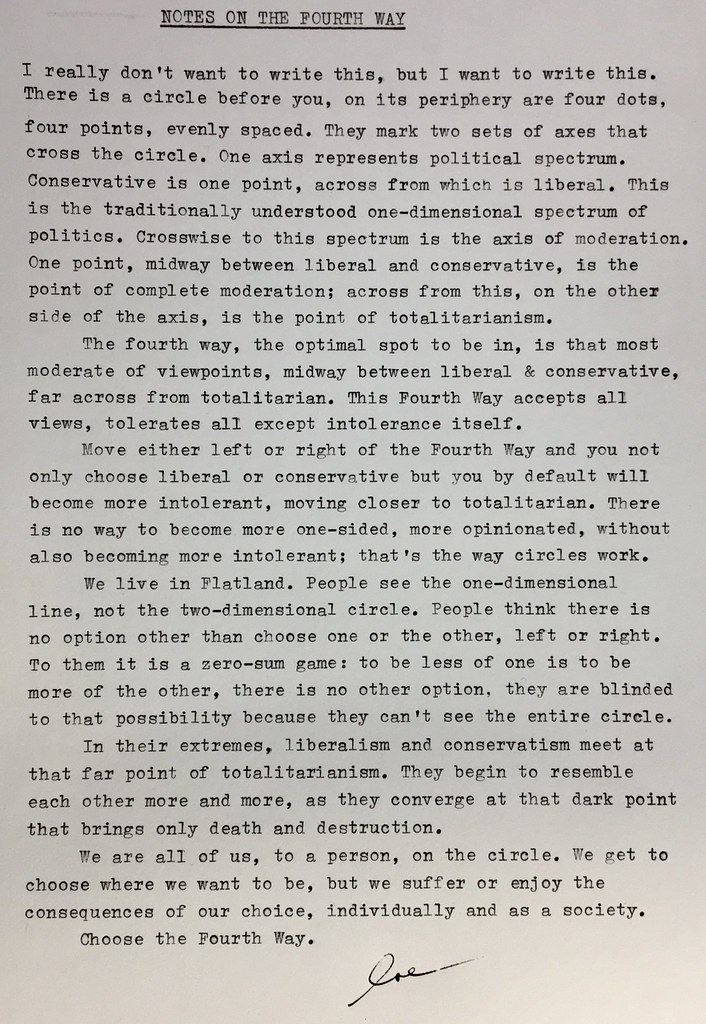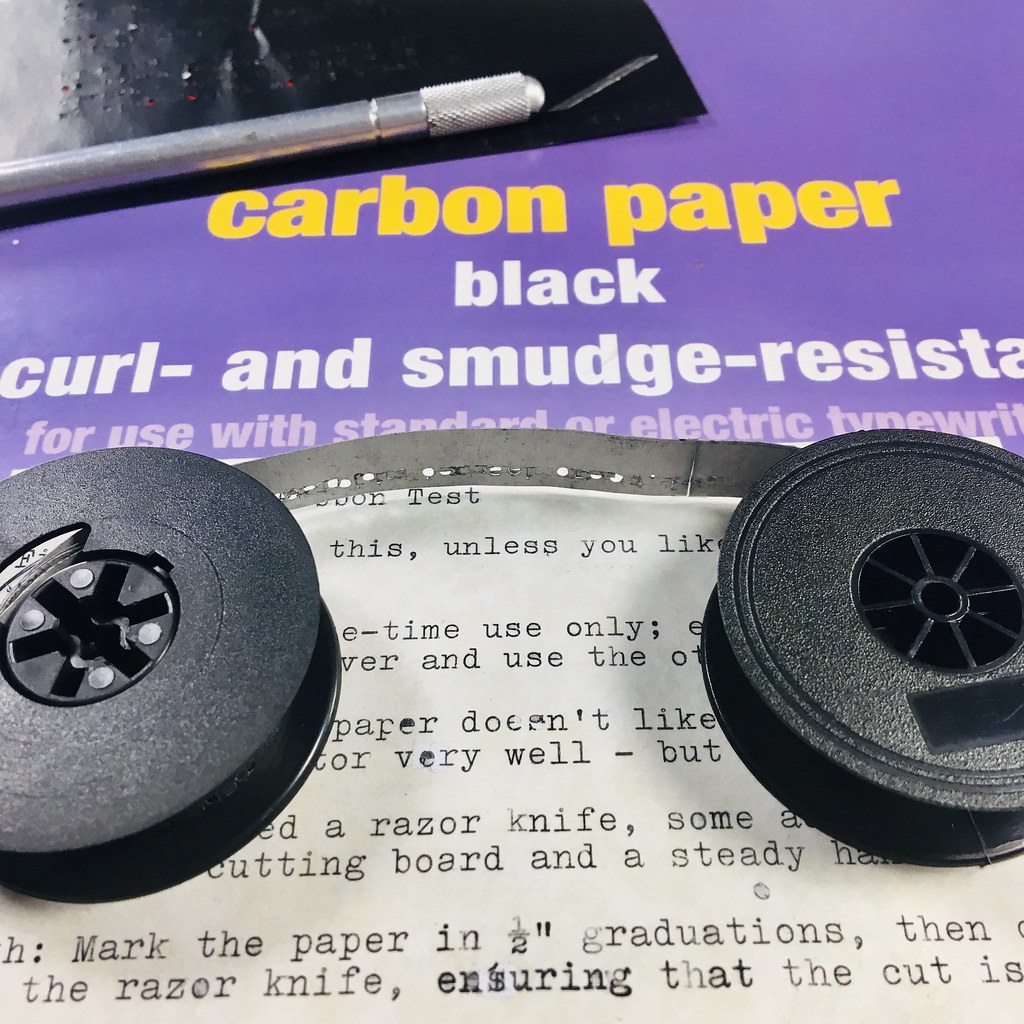 S
Should you make carbon paper ribbons for your typewriter? That's a question only you can answer. Let's suppose you're stuck on some "desert island" with only a typewriter, plenty of typing paper, carbon paper, adhesive tape, a razor knife, scissors and a cutting board. Okay, maybe some driftwood would suffice as a cutting board. And a pair of empty ribbon spools. Let's just suppose.
At first glance, this scenario seems rather unlikely. Maybe you were on one of those special Office Supply Junky cruises to the South Pacific. You know the kind. Hobnobbing with like-minded pen and stapler geeks; seminars on the intricacies of paper sizing in the forward dance hall; unlimited food and drinks - and pens! And then bad weather hits. Maybe the captain was busy with some lovely young ladies, assisting them in refilling their fountain pen converters and didn't see the satellite weather map. It could happen, don't laugh! And then, while you were whiling away the late night, sipping brandy and conversing about fanfold paper reams, disaster strikes, the ship is tossed to and fro and you awake on the sandy shores of some uncharted island with your typewriter satchel and barely your senses intact. What's a person to do? Simple: make carbon paper ribbons.
Of course, to make this unlikely scenario more realistic, you had to have forgotten your extra typewriter ribbons back home, and then were kind enough to loan your last ribbon to the nice couple in cabin 4B, the night before the storm.
And let's pretend that Tom Hanks isn't onboard, because if you and him got stranded together, he's much more likely to survive than you. Just saying.
If you did succeed, between looking for drinking water and foraging for food, in making carbon paper typewriter ribbons, here is what the rescuers likely would find, when they eventually found your bones:
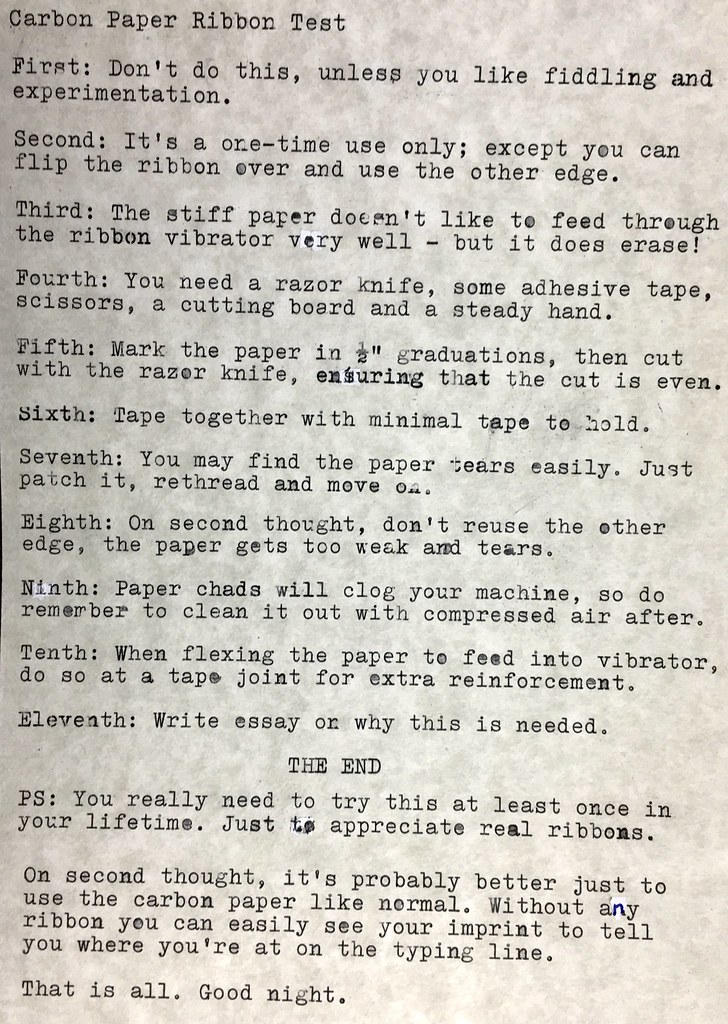
After carefully slicing and dicing the precious carbon paper into precise 1/2" wide strips and taping them together with the equally precious tape, you'd then have to tape their ends to those oh-so-precious ribbon spools, thusly:

It shouldn't have to be mentioned at this point that desert island castaways should tend extra special care to keeping sand out of said precious typewriter, between foraging for food and looking for anything resembling drinking water.
Next, you'll have to carefully thread the fragile paper strip into the ribbon vibrator. You may, between boughts of panic and despair, remember to set the bichrome control to red, and lock two adjacent typebars together to keep the vibrator in the raised position, making threading said fragile paper strip into the machine a bit easier, as you pause to scan the horizon for any sign of rescuers, who by now should be combing the waters of the Southern Ocean for any trace of survivors of the tragic loss of the S.S. Rolodex.

By now your spirits and blood sugar are trending rather low, but you've had it worse, remembering that time the Hermes 3000 was shipped to you broken in pieces by some careless online seller, the scoundrel - why did it have to be you that got stranded, why not him? Is there not any justice in the world? But small victories will save the day - you've managed to successfully thread said fragile paper ribbon into said precious typewriter, and have begun typing ... what? What is there to write about? Hmm, let me think, you think.
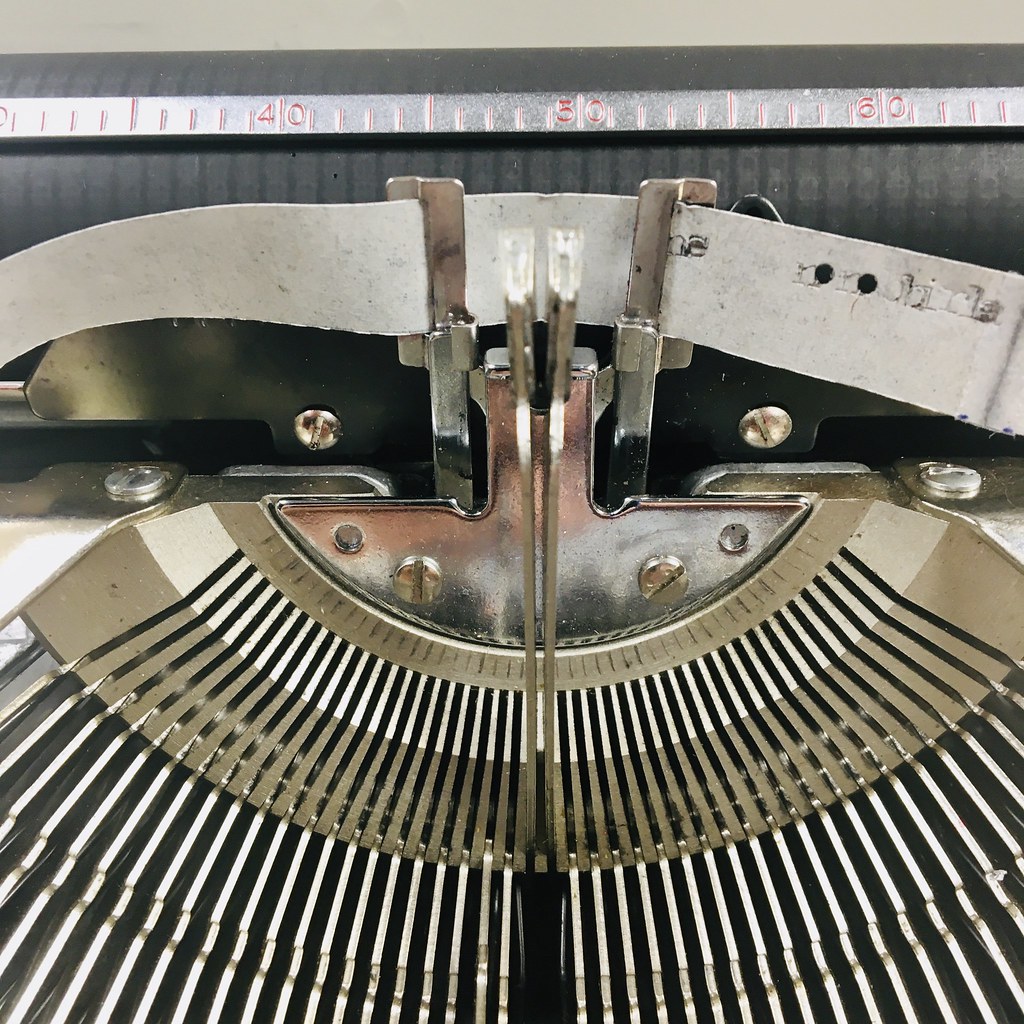
Now you're in the rhythm, an idea has caught itself in your craw and you're typing furiously - if only those damned fish would cooperate!

But alas, you've gotten too confident, that fragile paper ribbon shreds itself into tatters as you lie on the beach, sunbaked, and sob in despair at your predicament, wondering why life has to be so unfair, why you couldn't have simply used the carbon paper like normal people do; or wad it up in a ball and set it alight with the cigar torch you forgot you had in the bottom of your typewriter satchel, along with the satellite radio you so wisely brought but so foolishly forgot you had.

And that, dear reader, is why you should never, ever, embark on an all expenses paid transoceanic Office Supply Junky cruise of the South Pacific. Better to stay home and tend to your precious typewriter collection in the safety and security of your humble dwelling, and let the more daring venture forth.
Labels: carbon paper, DIY, typewriter play





